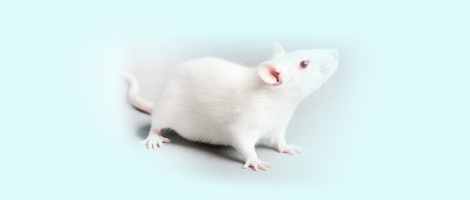













实验动物与比较医学 ›› 2022, Vol. 42 ›› Issue (3): 248-254.DOI: 10.12300/j.issn.1674-5817.2021.159
巩淼淼1,2( )(
)( ), 周丽桂3, 赵菊梅1(
), 周丽桂3, 赵菊梅1( )(
)( ), 师长宏2(
), 师长宏2( )(
)( )
)
收稿日期:2021-10-14
修回日期:2022-01-12
出版日期:2022-06-25
发布日期:2022-06-25
通讯作者:
赵菊梅(1970—),女,硕士生导师,教授,研究方向:肿瘤分子病理与药物。E-mail: jmz2003.stu@163.com。ORCID: 0000-0002-7813-8224作者简介:巩淼淼(1998—),女,硕士研究生,研究方向:类器官模型的构建与评价。E-mail: gongmiaomiaomail@163.com基金资助:
Miaomiao GONG1,2( )(
)( ), Ligui ZHOU3, Jumei ZHAO1(
), Ligui ZHOU3, Jumei ZHAO1( )(
)( ), Changhong SHI2(
), Changhong SHI2( )(
)( )
)
Received:2021-10-14
Revised:2022-01-12
Published:2022-06-25
Online:2022-06-25
Contact:
ZHAO Jumeii(ORCID: 0000-0002-7813-8224), E-mail: jmz2003.stu@163.com摘要:
类器官是利用干细胞或来源于患者组织建立起来的一种体外三维培养系统。运用该培养技术,正常胃类器官和胃癌类器官均可建立起来。类器官具有高保真性,尤其是可保留其来源组织中的分子结构、功能特征和遗传信息等,可用于治疗靶点筛选和药物反应预测及验证,为胃癌精准医学研究及实验动物替代研究提供了新的思路。本文综述了目前胃癌类器官模型的建立情况,以及类器官与精准医学的发展前景等,为胃癌类器官应用于精准医学研究提供理想的体外模型参考。
中图分类号:
巩淼淼,周丽桂,赵菊梅,等. 胃癌类器官在精准医学研究中的应用[J]. 实验动物与比较医学, 2022, 42(3): 248-254. DOI: 10.12300/j.issn.1674-5817.2021.159.
Miaomiao GONG,Ligui ZHOU,Jumei ZHAO,et al. Application of Gastric Cancer Organoids in Precision Medicine Research[J]. Laboratory Animal and Comparative Medicine, 2022, 42(3): 248-254. DOI: 10.12300/j.issn.1674-5817.2021.159.
特点 Characteristic | CL | CDX | PDX | GEMM | PDO |
|---|---|---|---|---|---|
周期 Period | +++ | ++ | ++ | + | +++ |
基因编辑 Genome editing | +++ | +++ | - | +++ | +++ |
高通量筛选 High throughput screening | +++ | - | - | - | +++ |
价格 Price | +++ | ++ | ++ | + | ++ |
临床相关性 Clinical interrelation | - | ++ | +++ | ++ | +++ |
肿瘤微环境 Tumor microenvironment | - | ++ | ++ | +++ | + |
个性化治疗 Individualized treatment | - | + | ++ | + | +++ |
表1 不同胃癌模型的比较
Table 1 Comparison of different models of gastric cancer
特点 Characteristic | CL | CDX | PDX | GEMM | PDO |
|---|---|---|---|---|---|
周期 Period | +++ | ++ | ++ | + | +++ |
基因编辑 Genome editing | +++ | +++ | - | +++ | +++ |
高通量筛选 High throughput screening | +++ | - | - | - | +++ |
价格 Price | +++ | ++ | ++ | + | ++ |
临床相关性 Clinical interrelation | - | ++ | +++ | ++ | +++ |
肿瘤微环境 Tumor microenvironment | - | ++ | ++ | +++ | + |
个性化治疗 Individualized treatment | - | + | ++ | + | +++ |
| 1 | BRAY F, FERLAY J, SOERJOMATARAM I, et al. Global cancer statistics 2018: GLOBOCAN estimates of incidence and mortality worldwide for 36 cancers in 185 countries[J]. CA: A Cancer J Clin, 2018, 68(6):394-424. DOI:10.3322/caac.21492 . |
| 2 | HE Y, WANG Y, LUAN F, et al. Chinese and global burdens of gastric cancer from 1990 to 2019[J]. Cancer Med, 2021, 10(10):3461-3473. DOI:10.1002/cam4.3892 . |
| 3 | KERSTEN K, DE VISSER K E, VAN MILTENBURG M H, et al. Genetically engineered mouse models in oncology research and cancer medicine[J]. EMBO Mol Med, 2017, 9(2):137-153. DOI:10.15252/emmm.201606857 . |
| 4 | KIM J, KOO B K, KNOBLICH J A. Human organoids: model systems for human biology and medicine[J]. Nat Rev Mol Cell Biol, 2020, 21(10):571-584. DOI:10.1038/s41580-020-0259-3 . |
| 5 | RISBRIDGER G P, LAWRENCE M G, TAYLOR R A. PDX: moving beyond drug screening to versatile models for research discovery[J]. J Endocr Soc, 2020, 4(11): bvaa132. DOI:10.1210/jendso/bvaa132 . |
| 6 | CORRÒ C, NOVELLASDEMUNT L, LI V S W. A brief history of organoids[J]. Am J Physiol Cell Physiol, 2020, 319(1): C151-C165. DOI:10.1152/ajpcell.00120.2020 . |
| 7 | KAMB A. What's wrong with our cancer models?[J]. Nat Rev Drug Discov, 2005, 4(2):161-165. DOI:10.1038/nrd1635 . |
| 8 | CAPONIGRO G, SELLERS W R. Advances in the preclinical testing of cancer therapeutic hypotheses[J]. Nat Rev Drug Discov, 2011, 10(3):179-187. DOI:10.1038/nrd3385 . |
| 9 | VLACHOGIANNIS G, HEDAYAT S, VATSIOU A, et al. Patient-derived organoids model treatment response of metastatic gastrointestinal cancers[J]. Science, 2018, 359(6378):920-926. DOI:10.1126/science.aao2774 . |
| 10 | SEIDLITZ T, MERKER S R, ROTHE A, et al. Human gastric cancer modelling using organoids[J]. Gut, 2019, 68(2):207-217. DOI:10.1136/gutjnl-2017-314549 . |
| 11 | JABS J, ZICKGRAF F M, PARK J, et al. Screening drug effects in patient-derived cancer cells links organoid responses to genome alterations[J]. Mol Syst Biol, 2017, 13(11):955. DOI:10.15252/msb.20177697 . |
| 12 | ABBASI J. Patient-derived organoids predict cancer treatment response[J]. JAMA, 2018, 319(14):1427. DOI:10.1001/jama.2018.3760 . |
| 13 | STEELE N G, CHAKRABARTI J, WANG J, et al. An organoid-based preclinical model of human gastric cancer[J]. Cell Mol Gastroenterol Hepatol, 2019, 7(1):161-184. DOI:10.1016/j.jcmgh.2018.09.008 . |
| 14 | BARKER N, HUCH M, KUJALA P, et al. Lgr5(+ve) stem cells drive self-renewal in the stomach and build long-lived gastric units in vitro [J]. Cell Stem Cell, 2010, 6(1):25-36. DOI:10.1016/j.stem.2009.11.013 . |
| 15 | YAN H H N, SIU H C, LAW S, et al. A comprehensive human gastric cancer organoid biobank captures tumor subtype heterogeneity and enables therapeutic screening[J]. Cell Stem Cell, 2018, 23(6):882-897.e11. DOI:10.1016/j.stem. 2018.09.016 . |
| 16 | NANKI K, TOSHIMITSU K, TAKANO A, et al. Divergent routes toward wnt and R-spondin niche independency during human gastric carcinogenesis[J]. Cell, 2018, 174(4):856-869.e17. DOI:10.1016/j.cell.2018.07.027 . |
| 17 | GAO M, LIN M, RAO M, et al. Development of patient-derived gastric cancer organoids from endoscopic biopsies and surgical tissues[J]. Ann Surg Oncol, 2018, 25(9):2767-2775. DOI:10.1245/s10434-018-6662-8 . |
| 18 | UKAI S, HONMA R, SAKAMOTO N, et al. Molecular biological analysis of 5-FU-resistant gastric cancer organoids; KHDRBS3 contributes to the attainment of features of cancer stem cell[J]. Oncogene, 2020, 39(50):7265-7278. DOI:10.1038/s41388-020-01492-9 . |
| 19 | HOLOKAI L, CHAKRABARTI J, BRODA T, et al. Increased programmed death-ligand 1 is an early epithelial cell response to Helicobacter pylori infection[J]. PLoS Pathog, 2019, 15(1): e1007468. DOI:10.1371/journal.ppat.1007468 . |
| 20 | STANGE D E, KOO B K, HUCH M, et al. Differentiated Troy+chief cells act as reserve stem cells to generate all lineages of the stomach epithelium[J]. Cell, 2013, 155(2):357-368. DOI:10.1016/j.cell.2013.09.008 . |
| 21 | XIAO X, CHEN W, WEI Z W, et al. The anti-tumor effect of nab-paclitaxel proven by patient-derived organoids[J]. Onco Targets Ther, 2020, 13:6017-6025. DOI:10.2147/ott.s237431 . |
| 22 | LI J, XU H, ZHANG L, et al. Malignant ascites-derived organoid (MADO) cultures for gastric cancer in vitro modelling and drug screening[J]. J Cancer Res Clin Oncol, 2019, 145(11):2637-2647. DOI:10.1007/s00432-019-03004-z . |
| 23 | LAUREN P. The two histological main types of gastric carcinoma: diffuse and so-called intestinal-type carcinoma. an attempt at a histo-clinical classification[J]. Acta Pathol Microbiol Scand, 1965, 64:31-49. DOI:10.1111/apm.1965.64.1.31 . |
| 24 | BOSMAN F T, CARNEIRO F, HRUBAN R H, et al. WHO classification of tumours of the digestive system[M]. Lyon, France: International Agency for Research on Cancer Press, 2010. |
| 25 | CANCER GENOME ATLAS RESEARCH NETWORK. Comprehensive molecular characterization of gastric adenocarcinoma[J]. Nature, 2014, 513(7517):202-209. DOI:10.1038/nature13480 . |
| 26 | WANG K, YUEN S T, XU J, et al. Whole-genome sequencing and comprehensive molecular profiling identify new driver mutations in gastric cancer[J]. Nat Genet, 2014, 46(6):573-582. DOI:10.1038/ng.2983 . |
| 27 | LO Y H, KOLAHI K, DU Y, et al. A CRISPR/Cas9-engineered ARID1A-deficient human gastric cancer organoid model reveals essential and non-essential modes of oncogenic transformation[J]. Cancer Discov, 2021, 11(6):1562-1581. DOI: 10.1158/2159-8290.CD-20-1109 . |
| 28 | WANG Y, KIM R, GUNASEKARA D B, et al. Formation of human colonic crypt array by application of chemical gradients across a shaped epithelial monolayer[J]. Cell Mol Gastroenterol Hepatol, 2018, 5(2):113-130. DOI:10.1016/j.jcmgh.2017.10.007 . |
| 29 | WANG X, YAMAMOTO Y, WILSON L H, et al. Cloning and variation of ground state intestinal stem cells[J]. Nature, 2015, 522(7555):173-178. DOI:10.1038/nature14484 . |
| 30 | NAKAGAWA H, FUJITA M. Whole genome sequencing analysis for cancer genomics and precision medicine[J]. Cancer Sci, 2018, 109(3):513-522. DOI:10.1111/cas.13505 . |
| 31 | BARTFELD S, BAYRAM T, VAN DE WETERING M, et al. In vitro expansion of human gastric epithelial stem cells and their responses to bacterial infection[J]. Gastroenterology, 2015, 148(1):126-136.e6. DOI:10.1053/j.gastro.2014.09.042 . |
| 32 | NADAULD L D, GARCIA S, NATSOULIS G, et al. Metastatic tumor evolution and organoid modeling implicate TGFBR2as a cancer driver in diffuse gastric cancer[J]. Genome Biol, 2014, 15(8):1-18. DOI:10.1186/s13059-014-0428-9 . |
| 33 | GRAHAM D Y. Helicobacter pylori update: gastric cancer, reliable therapy, and possible benefits[J]. Gastroenterology, 2015, 148(4):719-31.e3. DOI:10.1053/j.gastro.2015.01.040 . |
| 34 | BURKITT M D, DUCKWORTH C A, WILLIAMS J M, et al. Helicobacter pylori-induced gastric pathology: insights from in vivo and ex vivo models[J]. Dis Model Mech, 2017, 10(2):89-104. DOI:10.1242/dmm.027649 . |
| 35 | ÖHLUND D, HANDLY-SANTANA A, BIFFI G, et al. Distinct populations of inflammatory fibroblasts and myofibroblasts in pancreatic cancer[J]. J Exp Med, 2017, 214(3):579-596. DOI:10.1084/jem.20162024 . |
| 36 | SCHLAERMANN P, TOELLE B, BERGER H, et al. A novel human gastric primary cell culture system for modelling Helicobacter pylori infection in vitro [J]. Gut, 2016, 65(2):202-213. DOI:10.1136/gutjnl-2014-307949 . |
| 37 | SCANU T, SPAAPEN R M, BAKKER J M, et al. Salmonella manipulation of host signaling pathways provokes cellular transformation associated with gallbladder carcinoma[J]. Cell Host Microbe, 2015, 17(6):763-774. DOI:10.1016/j.chom. 2015. 05.002 . |
| 38 | MCCRACKEN K W, CATÁ E M, CRAWFORD C M, et al. Modelling human development and disease in pluripotent stem-cell-derived gastric organoids[J]. Nature, 2014, 516(7531):400-404. DOI:10.1038/nature13863 . |
| 39 | SCHUMACHER M A, FENG R, AIHARA E, et al. Helicobacter pylori-induced sonic hedgehog expression is regulated by NFκB pathway activation: the use of a novel in vitro model to study epithelial response to infection[J]. Helicobacter, 2015, 20(1):19-28. DOI:10.1111/hel.12152 . |
| 40 | WEEBER F, OOFT S N, DIJKSTRA K K, et al. Tumor organoids as a pre-clinical cancer model for drug discovery[J]. Cell Chem Biol, 2017, 24(9):1092-1100. DOI:10.1016/j.chembiol. 2017.06.012 . |
| 41 | FRANCIES H E, BARTHORPE A, MCLAREN-DOUGLAS A, et al. Drug sensitivity assays of human cancer organoid cultures[J]. Methods Mol Biol, 2019, 1576:339-351. DOI:10.1007/7651_2016_10 . |
| 42 | ABERLE M R, BURKHART R A, TIRIAC H, et al. Patient-derived organoid models help define personalized management of gastrointestinal cancer[J]. Br J Surg, 2018, 105(2):e48-e60. DOI:10.1002/bjs.10726 . |
| 43 | DROST J, CLEVERS H. Organoids in cancer research[J]. Nat Rev Cancer, 2018, 18(7):407-418. DOI:10.1038/s41568-018-0007-6 . |
| 44 | HAAG G M. OPPOSITE: Outcome prediction of systemic treatment in esophagogastric carcinoma (OPPOSITE)[EB/OL]. [2019-02-18]. . |
| 45 | WALLASCHEK N, REUTER S, SILKENAT S, et al. Ephrin receptor A2, the epithelial receptor for Epstein-Barr virus entry, is not available for efficient infection in human gastric organoids[J]. PLoS Pathog, 2021, 17(2): e1009210. DOI:10.1371/journal.ppat.1009210 . |
| [1] | 谭邓旭, 马一凡, 刘可, 张延英, 师长宏. 重塑细胞间互动:类器官共培养模型赋能疾病机制与治疗探索[J]. 实验动物与比较医学, 2025, 45(3): 309-317. |
| [2] | 胡敏, 董乐轩, 高怡, 奚子芪, 沈子皓, 唐瑞阳, 栾鑫, 汤忞, 张卫东. 生物3D打印研究及与临床前动物模型的交叉应用展望[J]. 实验动物与比较医学, 2025, 45(3): 318-330. |
| [3] | 万颖寒, 顾也欣, 袁雨浓, 汤忞, 鲁立. FDA现代化法案2.0给疾病动物模型发展带来的启示和思考[J]. 实验动物与比较医学, 2023, 43(5): 472-481. |
| [4] | 黄静怡, 李培宁, 刘香梅, 刘忠华, 黄宇锋. 皮肤致敏性替代试验方法的研究进展[J]. 实验动物与比较医学, 2022, 42(4): 313-321. |
| [5] | 宋伟杰, 周岩, 牛瑞芳. 人源肿瘤异种移植动物模型在癌症精准医学研究中的应用[J]. 实验动物与比较医学, 2021, 41(6): 493-500. |
| [6] | 赵国屏. 从人类基因组计划到精准医学—比较医学的发展趋势与挑战[J]. 实验动物与比较医学, 2021, 41(1): 1-8. |
| [7] | 罗宝花, 张永斌, 刘晓秋, 师长宏. 肿瘤类器官模型的建立及应用[J]. 实验动物与比较医学, 2020, 40(6): 540-546. |
| [8] | 陈秀娟, 黄宇锋, 刘香梅, 庞增雄, 江漪, 李培宁, 李光先, 陈梓灵, 孙侠, 王强. 多层试验组合策略对1,2-己二醇眼刺激性/腐蚀性的评价[J]. 实验动物与比较医学, 2018, 38(3): 217-221. |
| [9] | 葛晓梅, 张一心, 谢付波, 刘继斌, 杨磊, 渠颖颖, 顾莹, 李学廷, 杨伟敏, 刘喜朋, 周禾, 强福林. 人胃癌细胞系的建立及其评价[J]. 实验动物与比较医学, 2017, 37(4): 257-265. |
| [10] | 禇芳, 李玉云, 费健, 黎砚书. 乌骨藤提取物抑制人胃癌卵巢癌裸鼠荷瘤效果的实验观察[J]. 实验动物与比较医学, 2015, 35(1): 23-26. |
| [11] | 许春花, 杨磊, 汤旭蓁, 胡刚, 耿沁, 欧阳可栋, 谢付波, 王科, 秦宵然, 刘继斌, 杨伟敏, 陶维康, 张一心, 周禾. 人源性胃癌移植瘤模型的初步建立及其评价[J]. 实验动物与比较医学, 2014, 34(4): 259-265. |
| [12] | 程树军, 秦瑶, 步犁. 体外重建人体皮肤模型刺激试验的验证[J]. 实验动物与比较医学, 2012, 32(3): 243-246. |
| [13] | 谢欣昱, 杜小燕. 长爪沙鼠在幽门螺杆菌、听觉和焦虑症等研究领域的进展[J]. 实验动物与比较医学, 2012, 32(3): 254-258. |
| [14] | 程树军, 史光华. 化学品鱼类急性毒性的决策树及替代试验[J]. 实验动物与比较医学, 2012, 32(2): 152-155. |
| [15] | 彭秀华, 沈艳, 徐春华, 杨玉琴, 周文江. 采用小动物活体荧光成像对胃癌皮下和原位移植肿瘤生长的动态观察[J]. 实验动物与比较医学, 2011, 31(5): 371-375. |
| 阅读次数 | ||||||
|
全文 |
|
|||||
|
摘要 |
|
|||||